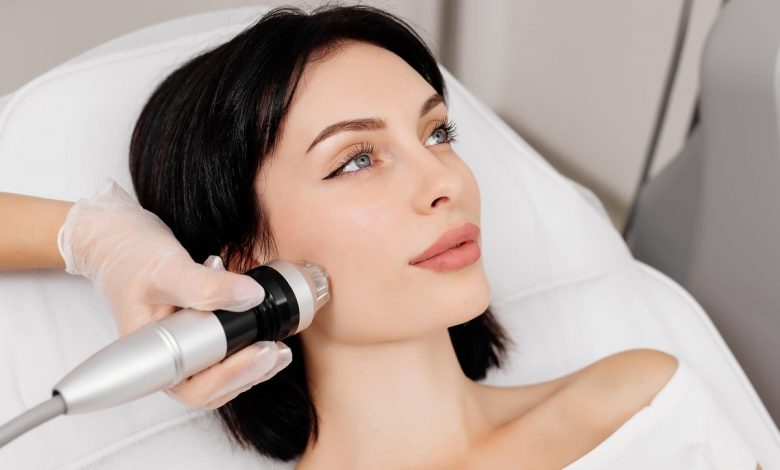Skin Rejuvenation Lasers: A Comprehensive Guide

Skin Rejuvenation Lasers: Skin rejuvenation lasers have become a popular choice for individuals seeking to enhance their skin’s appearance without invasive surgery.
These treatments leverage advanced technology to improve skin texture, reduce wrinkles, and address various skin concerns. This guide delves into the different types of skin rejuvenation lasers, how they work, their benefits, potential drawbacks, and essential pre-and post-treatment care.
Types of Skin Rejuvenation Lasers
1. Fractional Lasers
Fractional lasers use a technology that creates microscopic columns of thermal damage in the skin, which triggers the body’s natural healing processes. By targeting only a fraction of the skin at a time, these lasers stimulate collagen production and improve skin texture, reducing fine lines, wrinkles, and acne scars.
Pros: Shorter recovery time compared to more aggressive lasers, lower risk of complications, suitable for various skin types.
Cons: Multiple sessions may be required for optimal results, potential for temporary redness and sensitivity.
2. CO2 Lasers
CO2 lasers are known for their ability to treat deeper skin issues. They work by emitting a high-intensity beam of light that vaporizes damaged skin layers and stimulates new collagen growth. CO2 lasers are effective for severe sun damage, deep wrinkles, and significant textural irregularities.
Pros: Significant improvement in skin texture and firmness, effective for severe skin damage.
Cons: Longer recovery time, potential for more noticeable redness and swelling, may not be suitable for darker skin types due to the risk of pigmentation changes.
3. Erbium Lasers
Erbium lasers are used for less invasive skin resurfacing and are ideal for treating superficial wrinkles and minor skin imperfections. These lasers target the outer layers of the skin, promoting exfoliation and new skin growth.
Pros: Faster healing compared to CO2 lasers, minimal risk of pigmentation changes, effective for mild to moderate skin issues.
Cons: Results may not be as dramatic as with CO2 lasers, may require multiple sessions for optimal results.
How Skin Rejuvenation Lasers Work
Skin rejuvenation lasers operate on the principle of controlled thermal injury. When the laser beam is applied to the skin, it heats the targeted area, causing thermal damage to the skin’s upper layers. This process stimulates the body’s natural healing mechanisms, leading to increased collagen and elastin production. As new skin forms, the treated area becomes smoother, firmer, and more even in tone.
Benefits Of Skin Rejuvenation Lasers
Reduction in Wrinkles: Lasers stimulate collagen production, which helps smooth out fine lines and wrinkles, providing a more youthful appearance.
Improvement in Skin Texture: By removing damaged skin layers and promoting new cell growth, lasers enhance overall skin texture and reduce rough patches.
Decrease in Pigmentation: Lasers can target and break down excess melanin, improving the appearance of sunspots, age spots, and other types of hyperpigmentation.
Minimally Invasive: Compared to surgical options, laser treatments are non-invasive, meaning they typically involve less risk and a quicker recovery time.

Potential Drawbacks And Side Effects
Redness and Swelling: After treatment, some redness and swelling are common, especially with more aggressive lasers like CO2. This usually subsides within a few days to weeks.
Recovery Time: More intensive treatments, such as CO2 lasers, may require a longer recovery period during which the skin might be sensitive and red.
Risk of Hyperpigmentation: There is a potential risk of post-inflammatory hyperpigmentation, particularly for individuals with darker skin tones.
Cost: Laser treatments can be expensive, and multiple sessions may be needed to achieve desired results, leading to higher overall costs.
Pre-Treatment and Post-Treatment Care
Before Treatment
Consultation: Have a thorough consultation with a dermatologist to determine the most suitable laser treatment for your skin type and concerns.
Avoid Sun Exposure: Limit sun exposure and use sunscreen in the weeks leading up to your treatment to reduce the risk of complications.
Medications: Discontinue use of certain medications that may increase bleeding or sensitivity, as advised by your dermatologist.
After Treatment
Sun Protection: Apply sunscreen diligently and avoid sun exposure to prevent hyperpigmentation and protect the healing skin.
Moisturize: Use gentle, hydrating products to keep the skin moisturized and support the healing process.
Avoid Harsh Products: Refrain from using harsh skincare products or undergoing additional treatments until the skin has fully healed.
Conclusion
Skin rejuvenation lasers offer a range of options for improving skin appearance and addressing various skin concerns. By understanding the different types of lasers, their benefits, and potential drawbacks, you can make an informed decision about which treatment is right for you. Consulting with a qualified dermatologist will ensure that you choose the most effective and safe treatment for your specific needs, leading to optimal results and a rejuvenated appearance.
Also Read:
Are Skin Care Products Effective On Hair?
Skin Care Tips For Men: The 6 Best Tips For Daily Routine
The 7 Best Natural Skin Care Tips For Girls
Kids Skincare Routine: The 5 Best Reasons Why Kids Need Their Own Skincare Routine




